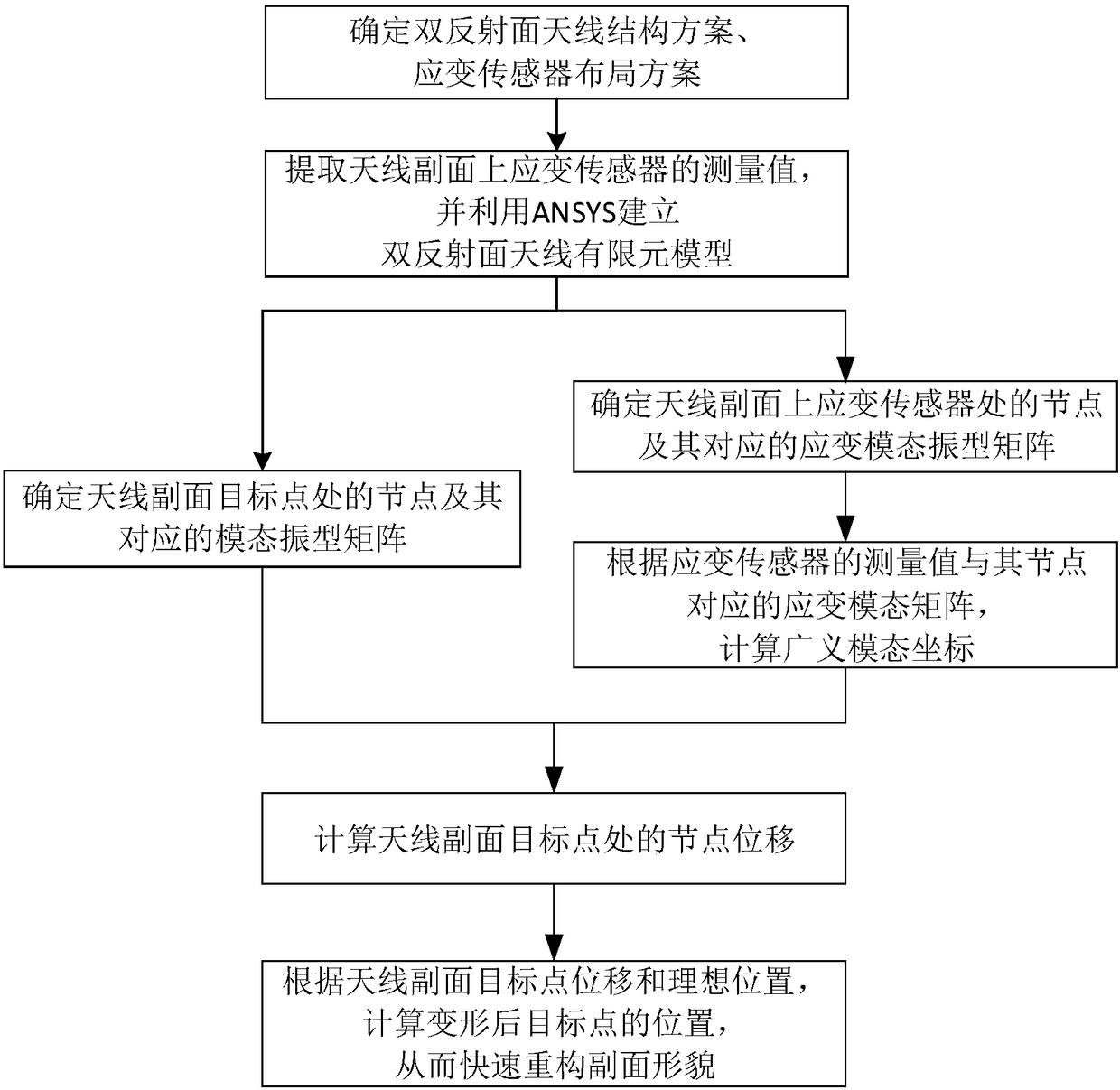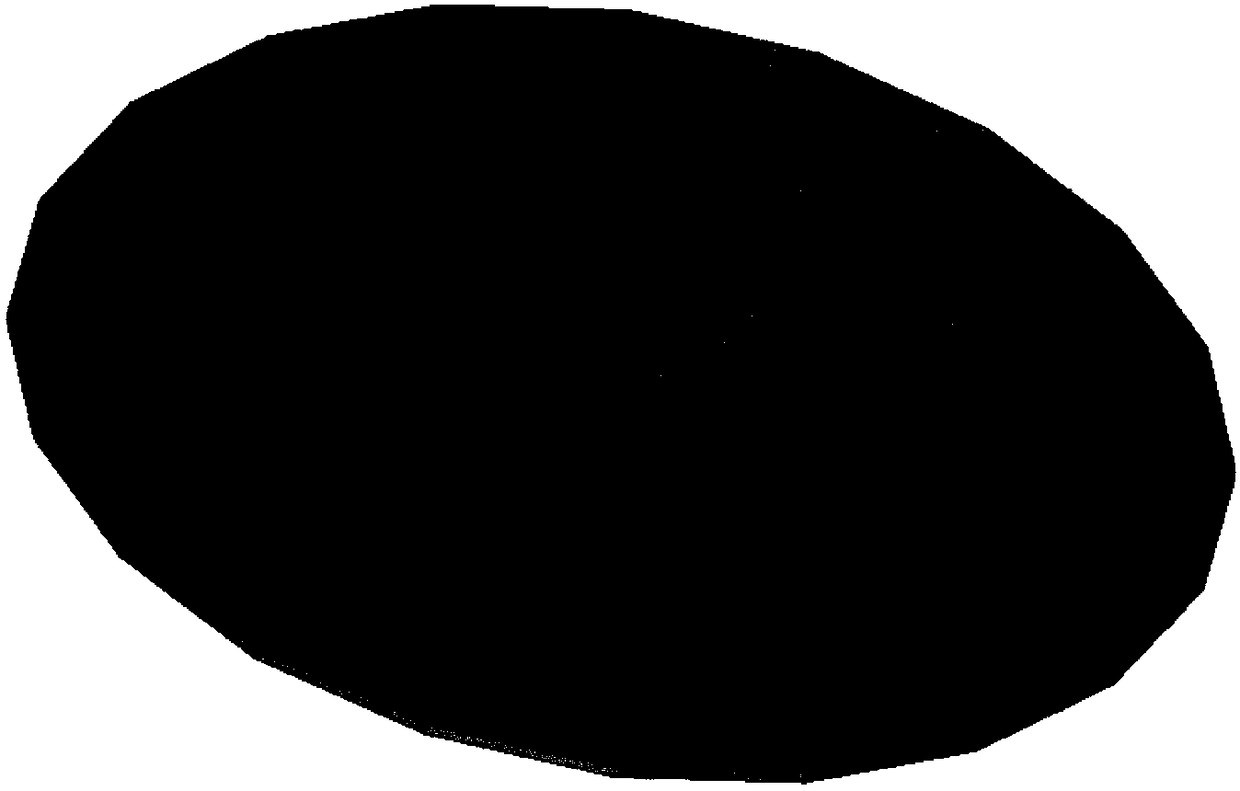Rapid reconstruction method of deformed antenna subreflector shape based on subreflector structure strain
A secondary surface and antenna technology, applied in the field of rapid reconstruction of deformed antenna secondary surface shape based on secondary surface structural strain, to achieve the effect of eliminating influence, short calculation period and low cost
- Summary
- Abstract
- Description
- Claims
- Application Information
AI Technical Summary
Problems solved by technology
Method used
Image
Examples
Embodiment Construction
[0048] The following describes the present invention in further detail with reference to the accompanying drawings and embodiments, but it is not used as a basis for any restriction on the present invention.
[0049] Reference figure 1 , The present invention is a method for rapidly reconstructing the topography of the deformed antenna secondary surface based on the structural strain of the secondary surface. The specific steps are as follows:
[0050] Step 1. Determine the structural parameters, working frequency and material properties of the main surface, secondary surface and back frame of the dual-reflector antenna, as well as the location and number of strain sensors.
[0051] The structural parameters of the dual reflector antenna include the aperture of the reflector and the arrangement of structural units on the secondary surface; the material properties of the dual reflector antenna include the density, elastic modulus and Poisson of the main surface, the secondary surface a...
PUM
 Login to View More
Login to View More Abstract
Description
Claims
Application Information
 Login to View More
Login to View More - R&D
- Intellectual Property
- Life Sciences
- Materials
- Tech Scout
- Unparalleled Data Quality
- Higher Quality Content
- 60% Fewer Hallucinations
Browse by: Latest US Patents, China's latest patents, Technical Efficacy Thesaurus, Application Domain, Technology Topic, Popular Technical Reports.
© 2025 PatSnap. All rights reserved.Legal|Privacy policy|Modern Slavery Act Transparency Statement|Sitemap|About US| Contact US: help@patsnap.com



